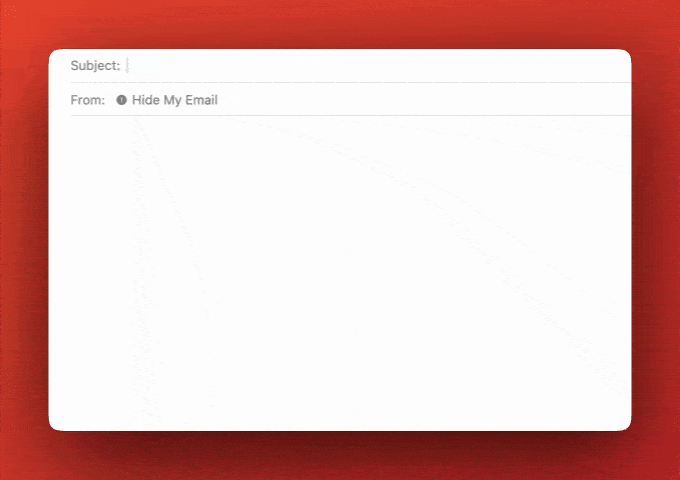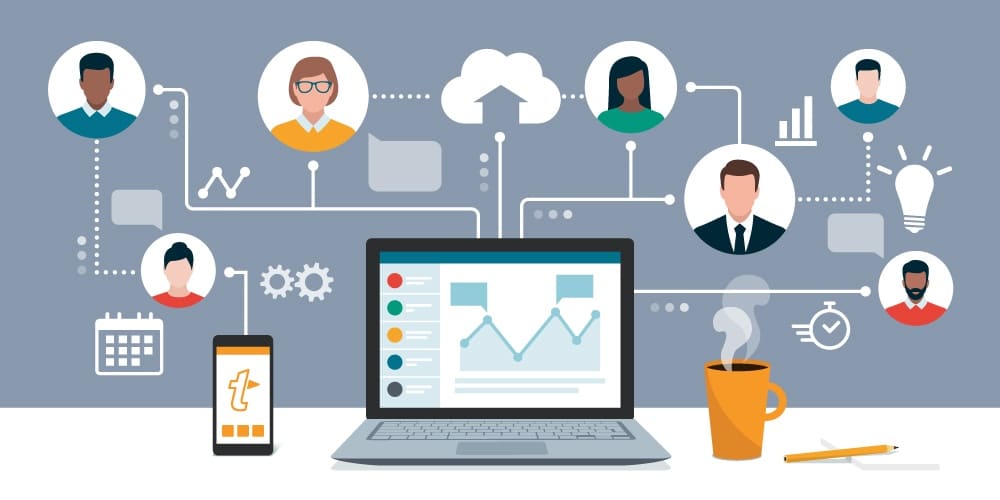Average response time is a key metric in customer service, measuring how long it takes for a business to reply to a customer inquiry. Response time can make or break a company’s relationship with its clients. Quick, efficient replies enhance customer satisfaction and foster trust and loyalty. Delays in responding can lead to frustration, negative reviews, and lost business opportunities.
Whether through email, live chat, phone, or social media, maintaining a competitive response time is essential for business success. This guide explores industry benchmarks for average response times across different channels, why response time matters, and best practices to optimize your customer service efficiency.
What is average response time?
Average response time measures the duration between when a customer submits an inquiry and when they receive the first reply from a business. This metric is a clear indicator of how responsive a company is to its customers’ needs. It’s applicable across various communication channels like email, live chat, phone support, and social media.
Here’s how average response time applies in different contexts:
- Customer service: The time it takes for support teams to reply to a customer email, live chat, or social media inquiry. For example, if a customer emails a question at 10 a.m. and receives a reply at 2 p.m., the response time is 4 hours.
- IT systems: In IT services, average response time measures how quickly a system or server acknowledges and processes a request, such as responding to an outage report or a technical issue.
- Online services: For websites or apps, response time reflects how fast a service reacts to user actions, like page load times or transaction processing.
Understanding and tracking average response time helps businesses ensure they are meeting customer expectations and improving their overall service experience.
Why average response time matters
Fast and efficient response times are critical for delivering excellent customer service. Here’s why average response time is essential for business success:
Customer satisfaction and loyalty
Customers want to feel valued, and a quick response shows that their needs matter. Prompt replies enhance satisfaction and build trust, making customers more likely to return for future business. 90% of customers rate an immediate response as important or very important when they have a question.
Brand reputation
Response times can significantly influence how customers perceive your brand. Companies known for slow or unresponsive service can quickly develop a negative reputation. Delays in communication may lead to poor reviews, social media complaints, and customer churn. On the other hand, companies that respond quickly are viewed as reliable and customer-centric.
Competitive advantage
In competitive industries, offering faster response times can differentiate your brand from others. Quick responses can convert inquiries into sales more effectively, helping you stand out as a leader in customer service. Brands that respond promptly are more likely to win and retain customers compared to those with delayed communication.
Optimizing response times maintains strong customer relationships and helps you stay ahead of the competition.
How TextExpander can help average response time
TextExpander is a productivity tool that keeps your team’s most essential responses a few keystrokes away. . It allows customer service teams to improve average response time by responding quickly, accurately, and consistently. Time to response can come close to automated chatbots, but in the hands of real agents that can offer personalized, human responses. Here’s how TextExpander can make a significant impact:
Create reusable Snippets for common responses
Support agents often deal with the same questions or issues repeatedly. With TextExpander, you can create customizable Snippets for frequently used phrases, greetings, closing remarks, and detailed answers to common inquiries. Instead of typing a full response each time or copying and pasting them from a template, agents can insert a Snippet with just a few keystrokes, speeding up replies while maintaining accuracy.
Ensure consistent messaging
Inconsistent communication can frustrate customers and harm your brand reputation. TextExpander helps teams stay aligned by providing standardized, pre-approved messaging. This ensures every customer receives accurate and professional responses, no matter which agent handles the inquiry.
Personalize responses efficiently
While speed is important, personalization is key to delivering exceptional customer service. TextExpander allows you to include dynamic Fill-ins within Snippets, such as customer names or order details, making it easy to customize responses quickly. This blend of speed and personalization enhances customer satisfaction.

Reduce typing errors
Typos and errors can negatively affect customer trust. By using pre-written Snippets, agents minimize the risk of mistakes, ensuring responses are clear and professional. This helps maintain quality while keeping response times short.
Track productivity gains
TextExpander offers insights and analytics that show how much time your team is saving by using Snippets. Understanding these efficiency gains can help you optimize workflows further and measure improvements in response times.
By integrating TextExpander into your customer service processes, you empower your team to respond faster, more accurately, and with greater consistency, helping you meet or exceed industry benchmarks for average response time.
Industry benchmarks for average response time
Different communication channels come with varying customer expectations for response times. Here are the standard benchmarks for email, live chat, phone support, and social media, along with insights on how they impact customer satisfaction.
Email response time benchmarks
- Standard response times: According to a study by Toister Performance Solutions, 89% of customers expect businesses to respond to their emails within one hour, with 31.2% desiring a response in 15 minutes or less.
- Best-in-class response times: Leading organizations aim to reply within 1-2 hours to exceed customer expectations and demonstrate efficiency.
A prompt email response can reassure customers that their concerns are being addressed and prevent follow-up emails or frustration.
Live chat response time benchmarks
- Typical expectations: Customers typically expect a response within seconds during a live chat session.
- Industry standards: Businesses that excel in customer service often maintain average response times of under 30 seconds.
Live chat is designed for real-time support, so delays can lead to abandonment. Quick responses keep customers engaged and satisfied.
Phone support response time benchmarks
- Average wait times: Customers generally consider 2 minutes to be an acceptable wait time for phone support.
- Industry variations: In industries like healthcare or finance, where issues are often urgent, the wait time is typically under 2 minutes.
Efficient phone support reduces frustration and improves customer experience, especially when issues are complex and need immediate attention.
Social media response time benchmarks
-
Platform standards:
- Twitter: 78% of customers expect a response within 1 hour.
- Facebook: Customers anticipate replies within 4 hours.
- Impact on engagement: Quick responses on social media can improve brand loyalty and engagement. Slow replies may harm your brand’s reputation, especially when inquiries or complaints are public.
Businesses that maintain fast social media response times often see higher customer satisfaction and increased positive interactions.
Factors that influence response times
Several factors affect how quickly a business can respond to customer inquiries. Understanding these elements helps you identify bottlenecks and develop strategies to optimize response times.
Team availability and staffing
The size of your support team and how they are scheduled directly impact response times. Peak hours, holidays, or unexpected surges in inquiries can overwhelm staff, leading to delays. Ensuring adequate staffing during busy periods helps maintain prompt responses.
Technology and automation tools
Leveraging automation tools like chatbots, automated replies, and AI-driven systems can speed up responses. These tools handle simple inquiries immediately, allowing human agents to focus on more complex issues. However, over-reliance on automation without human oversight can lead to impersonal or incorrect responses.
Industry and customer expectations
Response time expectations vary by industry. For example:
- Healthcare and finance: Customers often expect rapid replies due to the urgency of their concerns.
- Retail and e-commerce: Quick responses are essential during sales events or product launches.
- B2B services: While slightly longer response times are tolerated, professional clients still value efficiency and clarity.
Complexity of inquiries
Simple inquiries can be resolved quickly, while complex issues may require more time for investigation. It’s crucial to acknowledge inquiries promptly and communicate any delays transparently to manage customer expectations.
By addressing these factors, businesses can fine-tune their customer service processes and reduce average response times effectively.
How to improve average response time
Improving your average response time requires a combination of technology, processes, and effective management. Here are some proven strategies to enhance your response efficiency.
Implement automation tools
Automation helps handle routine queries quickly, freeing up human agents for more complex tasks. Consider the following tools:
- Text expanders: Tools like TextExpander allow support agents to use customizable snippets for common responses, greetings, and templates. This reduces typing time, ensures consistent messaging, and helps agents reply faster without sacrificing quality.
- Chatbots: Provide immediate answers to frequently asked questions 24/7.
- Automated email replies: Acknowledge receipt of an inquiry and set expectations for a detailed follow-up.
- AI-driven systems: Use AI to categorize and route inquiries to the appropriate support agents, speeding up response times.
Optimize team training and staffing
Efficient customer service relies on well-trained teams and strategic staffing.
- Cross-training: Ensure agents are trained to handle various types of inquiries, improving flexibility during peak times.
- Shift planning: Schedule support agents according to customer demand patterns to maintain coverage during high-traffic periods.
- Clear workflows: Establish clear processes for handling inquiries to reduce confusion and delays.
Monitor and analyze response times
Tracking response times helps identify issues and measure progress.
- Use analytics tools: Platforms like Zendesk, Freshdesk, or HubSpot offer insights into response metrics.
- Set performance goals: Define specific targets for response times and review performance regularly.
- Identify bottlenecks: Analyze data to spot delays in workflows and take corrective action.
Set clear service level agreements (SLAs)
Service level agreements (SLAs) define the expected response times for different inquiries.
- Internal goals: Establish realistic targets for responding to emails, live chats, and phone calls.
- Transparency with customers: Communicate your SLAs to customers so they know what to expect.
- Regular reviews: Periodically evaluate and adjust SLAs to ensure they align with customer needs and business capabilities.
By combining automation, effective staffing, and continuous monitoring, you can significantly reduce your average response time and deliver exceptional customer service.
Tools for measuring average response time
Accurately measuring average response time is essential for identifying areas of improvement and ensuring your customer service meets industry standards. Here are some popular tools to help track and analyze response times across different communication channels:
Zendesk
Zendesk is a robust customer service platform that provides comprehensive analytics for tracking response times. It offers customizable reports, real-time dashboards, and automated tracking of first response times. Zendesk makes it easy to measure team performance and identify bottlenecks.
Freshdesk
Freshdesk is another powerful tool for managing customer support. It tracks response times for email, chat, phone, and social media inquiries. The platform’s analytics features help you set performance goals, generate reports, and monitor response metrics to ensure consistent customer service.
HubSpot Service Hub
HubSpot’s Service Hub offers customer service tracking and reporting capabilities, including response time metrics. It integrates seamlessly with other HubSpot tools, making it ideal for businesses already using HubSpot’s CRM. Service Hub’s reporting dashboards help monitor team efficiency and maintain customer satisfaction.
Intercom
Intercom provides tools for live chat and customer messaging, offering detailed analytics on response times. It helps you monitor real-time performance, automate responses with chatbots, and ensure quick replies to customer inquiries.
Help Scout
Help Scout focuses on email support and provides tools to measure response times and team performance. Its simple, intuitive dashboard makes it easy to track first response time, resolution time, and other key support metrics.
Sprout Social
For social media inquiries, Sprout Social tracks response times across platforms like Facebook, Twitter, and Instagram. It provides insights on how quickly your team engages with customers and helps you maintain a responsive online presence.
By leveraging these tools, businesses can track response times accurately, identify trends, and implement changes to improve overall customer service efficiency.
Common mistakes and how to avoid them
Improving average response time is crucial, but businesses often make mistakes that hinder their progress. Here are some common pitfalls and ways to avoid them:
Delays due to unclear processes
- Mistake: When there are no clear workflows or guidelines, customer inquiries can get stuck or passed around inefficiently.
- Solution: Implement well-documented processes for handling inquiries. Ensure every team member knows the steps for different types of customer queries and has clear guidelines for escalation.
Over-reliance on automation without human oversight
- Mistake: Relying too heavily on chatbots or automated replies can result in impersonal or irrelevant responses, frustrating customers.
- Solution: Use automation strategically and ensure complex or sensitive inquiries are quickly escalated to human agents. Regularly review chatbot interactions to ensure quality and relevance.
Ignoring data and analytics
- Mistake: Failing to monitor response time metrics can prevent businesses from identifying problems or inefficiencies.
- Solution: Regularly track and analyze response time data using tools like Zendesk or Freshdesk. Use these insights to make informed decisions and continuously improve processes.
Inadequate staffing during peak hours
- Mistake: Not having enough support agents during busy periods leads to delays and longer response times.
- Solution: Analyze customer inquiry trends to identify peak hours and staff accordingly. Consider offering flexible shifts or using part-time agents during high-demand periods.
Lack of communication with customers
- Mistake: Customers can become frustrated if they don’t know when to expect a response.
- Solution: Use automated replies to acknowledge inquiries and provide an estimated response time. Transparency helps manage expectations and reduces frustration.
By avoiding these common mistakes, businesses can ensure smoother operations, faster response times, and higher customer satisfaction.
Conclusion
Optimizing average response time is essential for delivering outstanding customer service and maintaining a competitive edge. Quick and efficient responses enhance customer satisfaction, improve brand reputation, and foster customer loyalty. Businesses can meet or exceed customer expectations by understanding industry benchmarks, leveraging automation tools, optimizing staffing, and regularly monitoring performance.
Remember, consistent improvements to your response time won’t just benefit your customers—they will also create a more efficient and effective support team. Prioritize responsiveness, avoid common pitfalls, and implement best practices to ensure your business stands out in an increasingly competitive marketplace.

